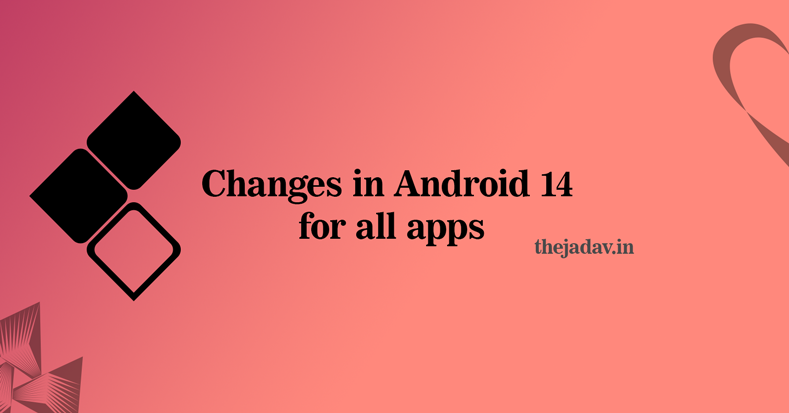Welcome to TheJadav.in, here we will see what we need to change or check when our app is running on Android 14. Here we will check only those changes which is applicable to all apps either is targeting Android 14 or not.
1) Schedule exact alarms are denied by default
If you are working with alarms in your app to show notification or some action at specific time then you need to ask permission to user, because now starting from Android 14, SCHEDULE_EXACT_ALARM permission is not be default granted.
2) Context-registered broadcasts are queued while apps are cached
Context-registered broadcasts are registered within the context like Activity or Fragment. These broadcast will not longer trigger and instead it will be queued in Android 14 if the app is in cached state. When app leaves cached state like user bring it to foreground system will deliver queued broadcast either in queue or it will be merged.
3) Background processes
The mechanism of killBackgroundProcesses() method is now changed from Android 14. We should not call it even in older version of android, because android is designed to manage background apps and will free resources whenever it needed. killBackgroundProcesses() method will not kill process of other apps from Android 14.
4) MinSdkVersion
From the Android 14, If you want to install app your app’s minimum target sdk should be 23. Why this change? For each version of android there is improvement in security standards, so device also make it hard for malware app to access data without permission as of android 22 and lower.
5) QUERY_ALL_PACKAGES
From android 14 if app requesting this permission than you should be careful, because now you need to declare it as core feature of the app otherwise play store will consider it as violation of policy.
6) Partial access to photos and videos
Now from android 14, users can choose specific images or videos accessible to the app. So, now user have 3 options like choose photos and videos, allow all and don’t allow. If you are accessing image by photo picker, then you don’t have to worry about it.
7) USE_FULL_SCREEN_INTENT
Well this permission is used when app want to display full screen content when phone is locked. This intent is specially designed for high priority task like phone call or alarms. Now starting from Android 14, this permission will not be granted by default, you need to checkout NotificationManager for the same.
8) Non-dismissable notifications
Android 14 users are now able to dismiss that non-dismissable notifications from the drawer, but if the notification is for real call, media, dpc or enterprise supported or phone is locked or clear all can not dismiss notification.
9) Data safety information
Android 14 has added more places where user can see Data Safety section to enhance user privacy.
10) Non-linear font
Now from Android 14, system supports font scaling upto 200%, to provide more convenient experience to low-vision users.
